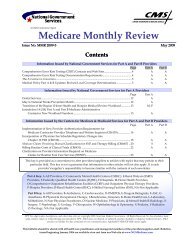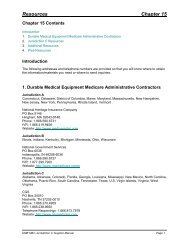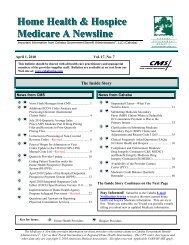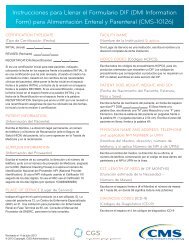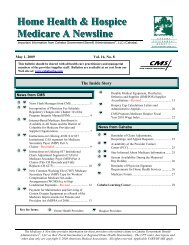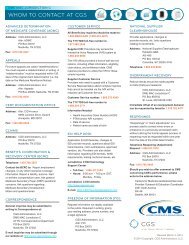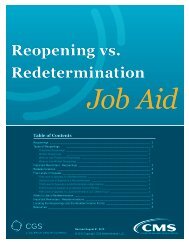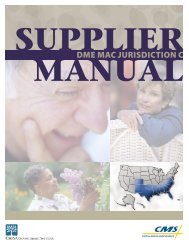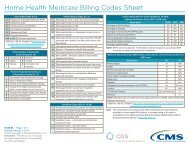oointerval history; an expanded problem focused examination; Medical decision making of lowcomplexity. Counseling and/or coordination of care with other providers or agencies areprovided consistent with the nature of the problem(s) and the patient’s and/or family’s needs.Usually, the patient is responding inadequately to therapy or has developed a minorcomplication. Physicians typically spend 15 minutes at the bedside and on the patient's facilityfloor or unit),99309 (Subsequent nursing facility care, per day, for the evaluation and management of a patient,which requires at least two of these three key components: A detailed interval history; a detailedexamination; Medical decision making of moderate complexity. Counseling and/or coordinationof care with other providers or agencies are provided consistent with the nature of the problem(s)and the patient’s and/or family’s needs. Usually, the patient has developed a significantcomplication or a significant new problem. Physicians typically spend 25 minutes at the bedsideand on the patient's facility floor or unit), and99310 (Subsequent nursing facility care, per day, for the evaluation and management of a patient,which requires at least two of these three key components: A comprehensive interval history; acomprehensive examination; Medical decision making of high complexity. Counseling and/orcoordination of care with other providers or agencies are provided consistent with the nature ofthe problem(s) and the patient’s and/or family’s needs. <strong>The</strong> patient may be unstable or may havedeveloped a significant new problem requiring immediate physician attention. Physicianstypically spend 35 minutes at the bedside and on the patient's facility floor or unit.Note: <strong>The</strong> frequency limitations on subsequent hospital care and subsequent nursing facility caredelivered through telehealth do not apply to inpatient telehealth consultations. Consulting practitionersshould continue to use the inpatient telehealth consultation HCPCS codes (G0406, G0407, G0408, G0425,G0426, or G0427) when reporting consultations furnished via telehealth.Inpatient telehealth consultations are furnished to beneficiaries in hospitals or skilled nursing facilities viatelehealth at the request of the physician of record, the attending physician, or another appropriatesource. <strong>The</strong> physician or practitioner who furnishes the initial inpatient consultation via telehealth cannotbe the physician or practitioner of record or the attending physician or practitioner, and the initialinpatient telehealth consultation would be distinct from the care provided by the physician orpractitioner of record or the attending physician or practitioner.• For dates of service (DOS) on or after <strong>January</strong> 1, <strong>2<strong>01</strong>1</strong>, <strong>Medicare</strong> contractors will accept and pay theadded codes according to the appropriate physician or practitioner fee schedule amount whensubmitted with a GQ or GT modifier.• For dates of service on or after <strong>January</strong> 1, <strong>2<strong>01</strong>1</strong>, <strong>Medicare</strong> contractors will accept and pay the addedcodes according to the appropriate physician or practitioner fee schedule amount when submittedwith a GQ or GT modifier by critical access hospitals (CAHs) that have elected Method II on TOB85X.Additional InformationIf you have questions, please contact your <strong>Medicare</strong> A/B MAC, carrier and/or FI at their toll-free numberwhich may be found at http://www.cms.gov/MLNProducts/downloads/CallCenterTollNumDirectory.zipon the CMS Web site.News Flash - Each Office Visit is an Opportunity. <strong>Medicare</strong> patients give many reasons for not gettingtheir annual flu vaccination, but the fact is that there are 36,000 flu-related deaths in the United Stateseach year, on average. More than 90 percent of these deaths occur in people 65 years of age and older.Please talk with your <strong>Medicare</strong> patients about the importance of getting their annual flu vaccination. ThisCPT codes and descriptors are only copyright 2<strong>01</strong>0 American Medical Association (or such other date publication of CPT)<strong>The</strong> <strong>Medicare</strong> <strong>Monthly</strong> <strong>Review</strong> 38 <strong>MMR</strong> <strong>2<strong>01</strong>1</strong>-<strong>01</strong>, <strong>January</strong> <strong>2<strong>01</strong>1</strong>
<strong>Medicare</strong>-covered preventive service will protect them for the entire flu season. And remember,vaccination is important for health care workers too, who may spread the flu to high risk patients. Don’tforget to immunize yourself and your staff. Protect your patients. Protect your family. Protect yourself.Get Your Flu Vaccine - Not the Flu.Remember – Influenza vaccine plus its administration are covered Part B benefits. Note that influenzavaccine is not a Part D covered drug. For information about <strong>Medicare</strong>’s coverage of the influenza vaccineand its administration, as well as related educational resources for health care professionals and theirstaff, please visit http://www.cms.gov/MLNProducts/Downloads/Flu_Products.pdf andhttp://www.cms.gov/AdultImmunizations on the CMS Web site.DisclaimerThis article was prepared as a service to the public and is not intended to grant rights or impose obligations. This article may contain references or links tostatutes, regulations, or other policy materials. <strong>The</strong> information provided is only intended to be a general summary. It is not intended to take the place of eitherthe written law or regulations. We encourage readers to review the specific statutes, regulations and other interpretive materials for a full and accurate statementof their contents. CPT only copyright 2009 American Medical Association.Fractional Mileage Amounts Submitted on Ambulance ClaimsMLN Matters® Number: MM7065Related Change Request (CR) #: 7065Related CR Release Date: November 19, 2<strong>01</strong>0Effective Date: <strong>January</strong> 1, <strong>2<strong>01</strong>1</strong>Related CR Transmittal #: R2103CPImplementation Date: <strong>January</strong> 3, <strong>2<strong>01</strong>1</strong>Provider Types AffectedThis article is for providers and suppliers of ambulance services who bill <strong>Medicare</strong> contractors (carriers,fiscal intermediaries [FIs], or Part A/B <strong>Medicare</strong> administrative contractors [A/B MACs]) for thoseservices.What You Need to KnowChange Request (CR) 7065, from which this article is taken, provides a new procedure for reportingfractional mileage amounts on ambulance claims, effective for claims for dates of service on or after<strong>January</strong> 1, <strong>2<strong>01</strong>1</strong>. Prior to that date, mileage is reported by rounding the total mileage up to the nearestwhole mile. Be sure billing personnel are aware of this change that requires ambulance providers andsuppliers to report to the nearest tenth of a mile for total mileage of less than 100 miles on ambulanceclaims as of <strong>January</strong> 1, <strong>2<strong>01</strong>1</strong>.BackgroundCurrently, the Centers for <strong>Medicare</strong> & Medicaid Services (CMS) Internet-Only Manual (IOM) Publication100-04, <strong>Medicare</strong> Claims Processing Manual, Chapter 15, Sections 30.1.2 and 30.2.1 require that ambulanceproviders and suppliers submitting claims to <strong>Medicare</strong> contractors use the appropriate HealthcareCommon Procedure Coding System (HCPCS) code for ambulance mileage to report the number of milestraveled during a <strong>Medicare</strong>-reimbursable trip for the purpose of determining payment for mileage.According to these instructions from CMS, providers and suppliers are required to round the totalmileage up to the nearest whole mile, including trips of less than one whole mile. For example, if the totalnumber of round trip miles traveled equals 9.5 miles, the provider or supplier enters 10 units on the claimform or the corresponding loop and segment of the ANSI X12N 837 electronic claim. For ambulancesuppliers submitting claims to the <strong>Medicare</strong> carriers or A/B MACs, the CMS IOM Publication 100-04,<strong>Medicare</strong> Claims Processing Manual, Chapter 26, Section10.4 additionally states that at least one (1) unitCPT codes and descriptors are only copyright 2<strong>01</strong>0 American Medical Association (or such other date publication of CPT)<strong>The</strong> <strong>Medicare</strong> <strong>Monthly</strong> <strong>Review</strong> 39 <strong>MMR</strong> <strong>2<strong>01</strong>1</strong>-<strong>01</strong>, <strong>January</strong> <strong>2<strong>01</strong>1</strong>
- Page 2 and 3: Centers for Medicare & Medicaid Ser
- Page 4: National Government Services Articl
- Page 7: R4 (effective 12/16/2010): Due to a
- Page 10 and 11: Article for Cardiovascular Nuclear
- Page 13 and 14: For dates of service prior to 01/01
- Page 15 and 16: Article for Magnetic Resonance Imag
- Page 17 and 18: LCD for Scanning Computerized Ophth
- Page 19 and 20: Article for Determination of Cardia
- Page 21 and 22: • CMS Internet-Only Manual (IOM),
- Page 23 and 24: to the third party but no notificat
- Page 25 and 26: Provider Types AffectedThis article
- Page 27 and 28: • HCPCS codes Q2026, Q2027, and G
- Page 29 and 30: Calendar Year 2011 Annual Update fo
- Page 31 and 32: Mapping Information• New code 829
- Page 33 and 34: Waiver of Coinsurance and Deductibl
- Page 35 and 36: Ambulance Inflation Factor for CY 2
- Page 37: Key Points of CR 7049CMS is adding
- Page 41 and 42: staff, please visit http://www.cms.
- Page 43 and 44: CMS has decided to follow the same
- Page 45 and 46: 2011. This amendment’s expanded c
- Page 47 and 48: • Rural Health Clinics (TOB 71X)
- Page 49 and 50: Note: CMS requests provider, physic
- Page 51 and 52: If you have any questions, please c
- Page 53 and 54: Quarterly Update to Correct Coding
- Page 55 and 56: • Peak oxygen consumption.Note: V
- Page 57 and 58: more than 12 months after a person
- Page 59 and 60: last year, increased by 1.1 percent
- Page 61 and 62: CodePayment LimitQ4027 $17.23Q4028
- Page 63 and 64: BillingIn general, it is inappropri
- Page 65 and 66: Provider Action NeededImpact to You
- Page 67 and 68: IntroductionAnnual outbreaks of sea
- Page 69 and 70: • CMS Frequently Asked Questions
- Page 71 and 72: Primary Care ServicesThe Affordable
- Page 73 and 74: The Affordable Care Act authorizes
- Page 75 and 76: Implementation of Changes in End-St
- Page 77 and 78: Home Health Face-to-Face Encounter
- Page 79 and 80: collaborate with and inform the com
- Page 81 and 82: News Flash - A revised Medicare Lea
- Page 83 and 84: DisclaimerThis article was prepared
- Page 85 and 86: Provider Types AffectedThis program
- Page 87 and 88: News Flash - Each Office Visit is a
- Page 89 and 90:
Provider Types AffectedPhysicians,
- Page 91 and 92:
On January 28, 2010, CMS made avail
- Page 93 and 94:
spelling the Ordering/Referring Pro
- Page 95 and 96:
• Doctor of podiatric medicine;
- Page 97:
ased on the CPT code descriptor, re




